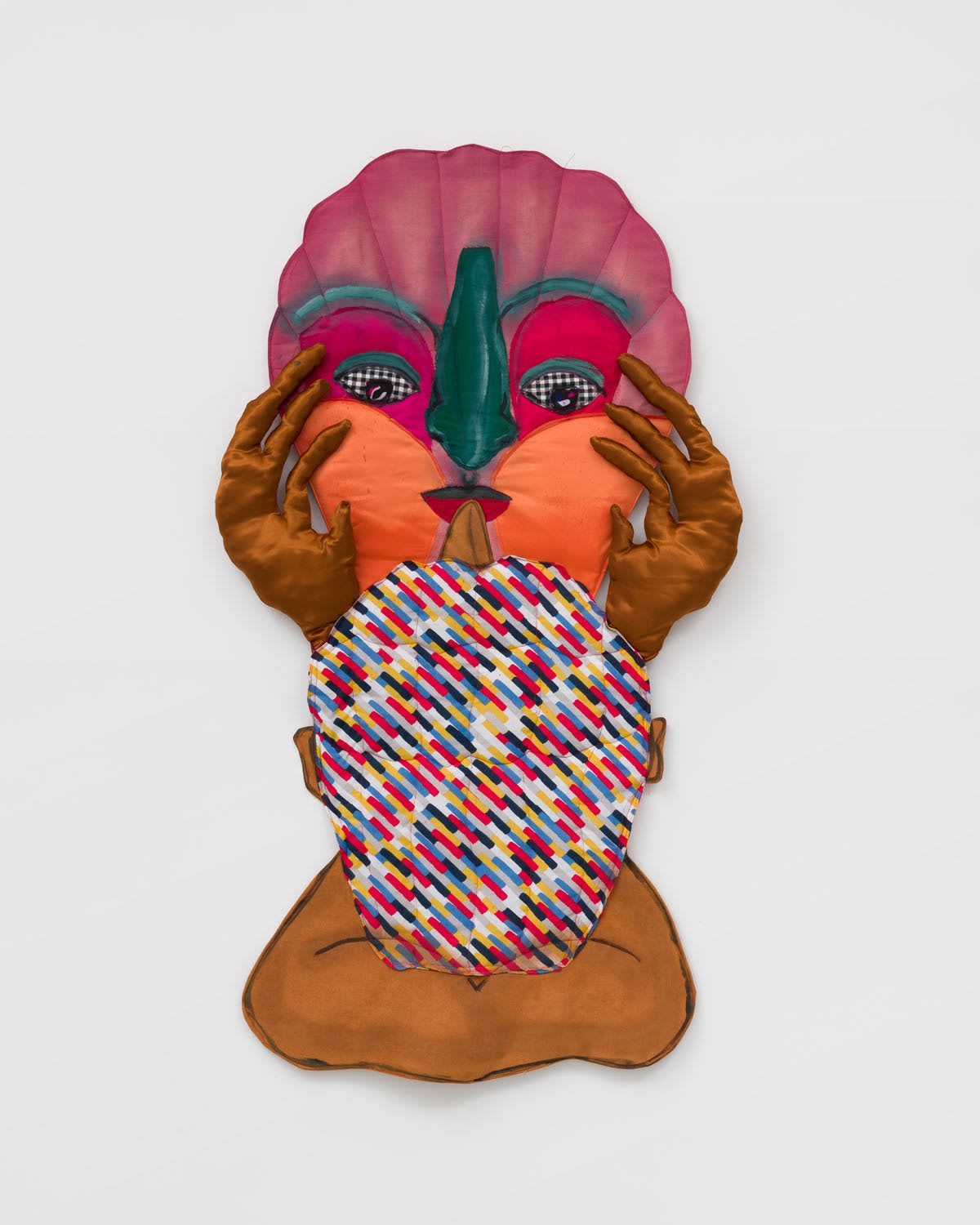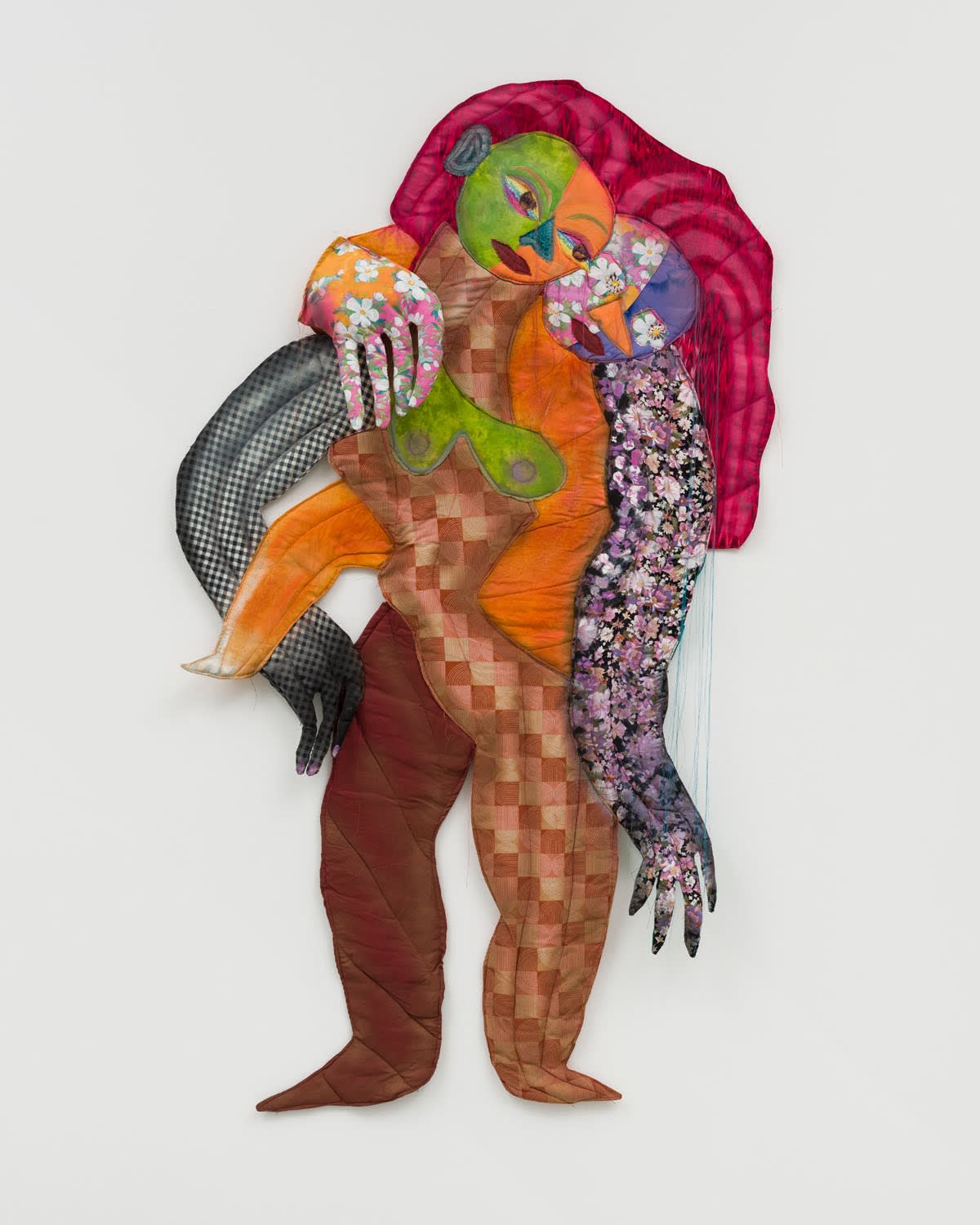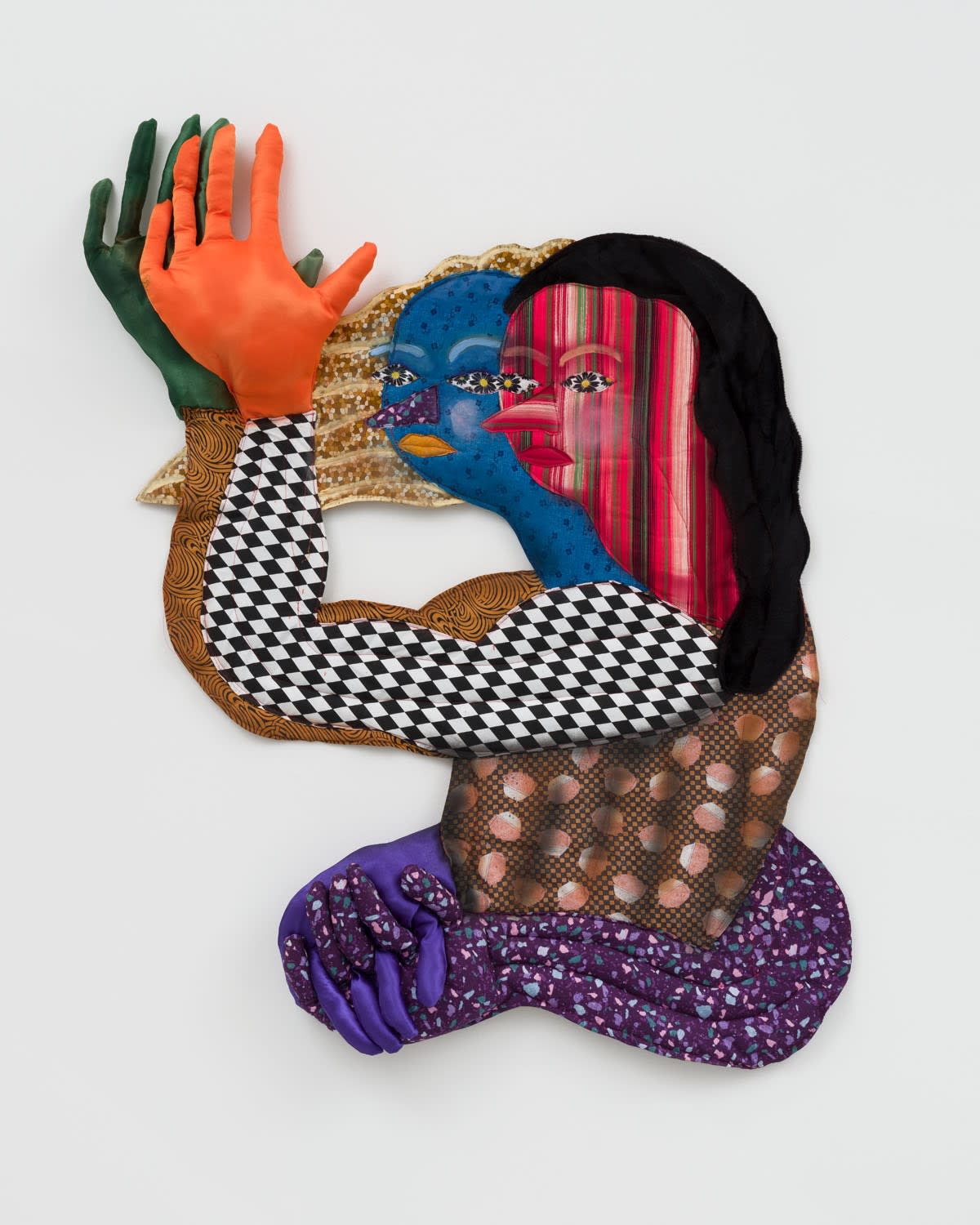Maria A. Guzmán Capron (b. 1981) received her MFA from California College of the Arts, San Francisco, CA in 2015 and her BFA from the University of Houston, TX in 2004.
Her works are a combination of colored textile that she sews by hand and shapes in bodily forms in a synthesis of figuration with abstraction.
Her research explores cultural hybridity and the assertive and competitive need of human beings in complex contemporary societies. Born in Italy to Colombian and Peruvian parents and later relocating to Texas as a teenager, the artist is familiar with this need to adapt to different cultures and countries.
Her multilayered textile works are a metaphor for the different identities that coexist within us, some that we repress and some that we exalt.
Maria A. Guzmán Capron has numerous solo exhibitions to her credit, including Shulamit Nazarian in Los Angeles, CA, Texas State Galleries in San Marcos, Roll Up Project in Oakland, CA and Guerrero Gallery in San Francisco, CA. Her work has been included in group exhibitions at NIAD Art Center in Richmond, CA, Buffalo Institute for Contemporary Art, Deli Gallery in Brooklyn, New York and Mana Contemporary in Chicago, among others.
We asked her to tell us more about her work in this exclusive interview for ArteMorbida.
Your works are hybrids in which you use different mediums among which the textile one stands out. How did you come to this language that synthesizes different skills including traditional ones such as sewing?
I didn’t have any background in sewing, but as an undergrad studying painting, I would use hot-glue to attach fabric cutouts to shapes made from cardboard and plywood. It was so exciting to not know how to use a material and to invent my own way, but at the heart of my experimentation was an earnest love and attraction for fabric itself. Crafted objects like quilts, woven textile from Peru and clothing have been a major source of inspiration. This led me to buy a cheap sewing machine and continue to experiment, creating costumes, masks, and soft-sculptures, and over nearly two decades of working with fabric, I have developed my own process for making that is at the core of my art practice.

Maria A. Guzmán Capron Temblor, 2021 Fabric, thread, batting, latex paint, spray paint and acrylic paint 34 x 36 in Courtesy of the artist and Shulamit Nazarian, Los Angeles
What is identity and how much is this theme inspiration, form and content of your works?
Through a combination of paints and hand-sewn textiles, I join together an array of patterns and striking colors to fashion bodily forms. Merging figuration with abstraction, these works explore cultural hybridity, pride, and the competing desires to assimilate and to be seen. I was born in Milan, Italy to Colombian and Peruvian parents, and lived there until I was 14. Although I spent my childhood in the same place that I was born, I was viewed as an immigrant from the start. I later relocated to Colombia, which offered a new form of immigrant experience, and later I relocated a third time to Texas. I recognize the challenges of toggling between various cultures and geographies. My multilayered textile works emphasize that we consist of several identities, some that we repress and some that we exalt.

Maria A. Guzmán Capron Te Quiero, 2021 Fabric, thread, batting, latex paint, spray paint and acrylic paint 43 x 24 in Courtesy of the artist and Shulamit Nazarian, Los Angeles Photo: Ed Mumford
What is the conceptual value of choosing to use waste fabrics for your works?
My practice explores how fabric, with its close reference to clothing, is a marker of class, gender and cultural identity. I am attracted to the off-cut fabrics from discount and repurpose stores, centering materials that have been cut and rejected as excess and in that way centralizing that which society undervalues. I am invested in the friction of mistranslations—of failing to “dress the part” or having one’s pride in self-expression overcast by exoticization.

Maria A. Guzmán Capron Te Llevo Dentro, 2021 Fabric, thread, batting, latex paint, spray paint and acrylic paint 59 x 29 in Courtesy of the artist and Shulamit Nazarian, Los Angeles Photo: Ed Mumford
Your artworks are very vividly colorful. What is color for you and what does it mean in the context of your works?
Clothing and the fabric it is made from carry signals and meanings. I know that some people think that a few bright colors make an outfit loud and exotic, but that is how my family dresses; with a vivid color palette and floral patterns similar to what you see in my work.
Exuberance in color is familiar and comforting to me, but I know it can feel brash to others. When I make my work I speak of that tension: I show you my taste, my personality and the stress of fitting it in a new space. As an immigrant, a person, I want to belong. I want to be part of my community, but not by giving up what I am; instead, I want to be part of creating space for more differences.

Maria A. Guzmán Capron Sígueme, 2021 Fabric, thread, batting, latex paint, spray paint and acrylic paint 46 x 36 in Courtesy of the artist and Shulamit Nazarian, Los Angeles Photo: Ed Mumfordarian
Through multilayered materials, your works overcome the two-dimensionality becoming sculptures. How assertive and autobiographical is this act of physically occupying a space?
The process and the kind of work I make is something new. I made it up because I need it to. It is, as you called, a hybrid that does not easily fit in a box. It is, in part, painting, sculptures and craft, and I like for it to occupy all of those realms. It is my language and with it I want to signal to other in-between people that they belong.

Maria A. Guzmán Capron Siempre (studio image), detail, 2021 Fabric, thread, batting, latex paint, spray paint and acrylic paint 40 x 62 in
Over the last two years, due to the pandemic and the resulting restrictions, we have become more and more virtual and, consequently, the body has become less and less a vehicle for real communication with the world. How did this period affect your research and your artistic practice?
This pandemic time has been so strange and full of change in how we relate to each other. When I was in full lock down at home only with my husband and daughter the world felt so tiny and intimate. I made work in the kitchen and it was small and I made several drawings. I am used to having my own studio and working big and messy. It was different but I enjoyed the change of pace for a time. When I first went back to the studio I immediately made a large piece that had so much energy. The hardest part and where I felt the most the lack of closeness was when I was teaching online. It is so hard to communicate and reach people without our bodies. I don’t think the body has become less of a vehicle for real communication. I think we are making due but we are longing for that real closeness.

Maria A. Guzmán Capron Siempre (studio image), 2021 Fabric, thread, batting, latex paint, spray paint and acrylic paint 40 x 62 in
What does it mean, in your experience, to be an artist today?
I remember seeing paintings in museums as a child and deciding I wanted to be an artist. I saw a way of communicating and reaching people. Those artworks reached me and I want to do the same. I tell the world who I am, and I am always changing. I want to show other people they can do the same.

Maria A. Guzmán Capron Equis, 2021 Fabric, thread, batting, acrylic and spray paint 55 x 51 in
What are your projects in the near future?
I am in a group exhibition opening in February at The Jewish Contemporary Museum. I am currently working on a solo exhibition for the Blaffer Museum in Houston, TX opening this summer, and in 2023 I am very excited to create a large-scale vibrant and immersive solo exhibition with my gallery, Shulamit Nazarian.

"Olas Malcriadas" by Maria Guzmán Capron on display at Texas State Galleries.









